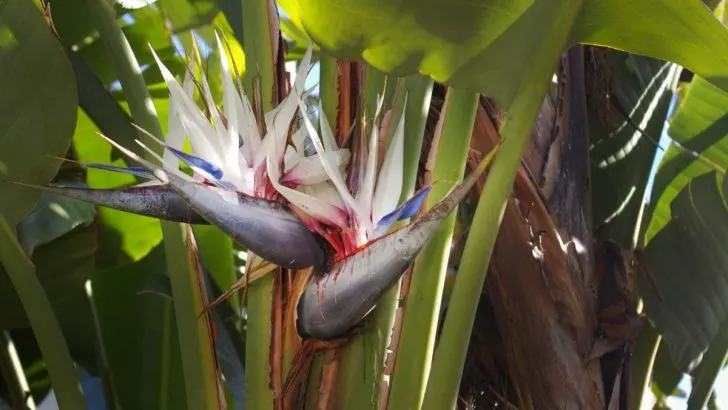How about growing a white bird of paradise? This wonderful tropical plant in will give an exotic feel to your home.
Before you start worrying about paradise light needs, temperature, and everything else, let me stop you right there.
The plant can grow near other plants you have indoors, such as a fiddle leaf fig, yucca plant, etc. Its clumping stalks will need some space, but nothing you can’t manage.
When you grow indoors a bird of paradise plant, you just have to make sure it has enough light. Once you took care of that, everything else is a picnic in a park.
Paradise care instructions aren’t something you should be concerned about. With lots of love and our help, even amateur green thumbs can grow this plant indoors.
Let’s learn all about the white bird of paradise care guide.
Why Is It Called A White Bird Of Paradise?
White is there due to the flower’s colors of course.
About White Birds Of Paradise Tropical Plants
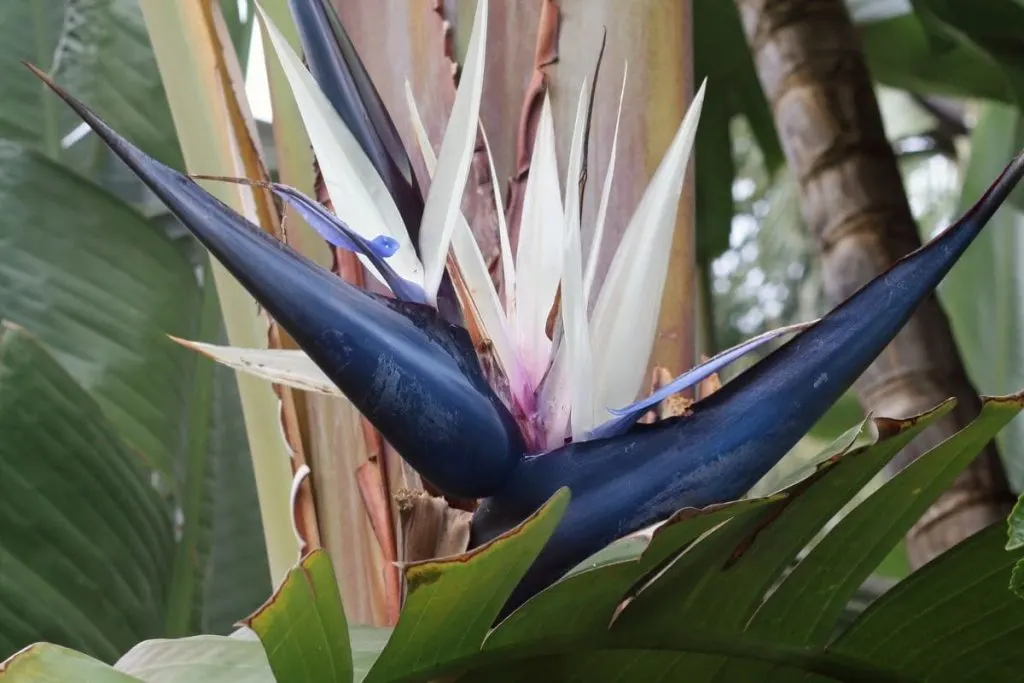
You might think that it’s not easy to take care of a beautiful plant like this indoors. Once the plant arrived in your home, you’re not so sure about what to do. Don’t worry, paradise grows indoors, and it grows very well.
Their multiple stems allow them to adapt to many different locations. Before you start worrying about bright light conditions and dead leaves, let’s learn more about the plant’s appearance.
- Native habitat: Strelitzia nicolai
- Botanic name: Strelitzia nicolai
- Family: Strelitziaceae
- Common names: banana plant, bird’s head, giant bird plant
- Leaf shape: arrow-shape, banana-like leaves, extreme leaf splitting
- Toxicity: a minimally toxic plant
- Flower color/shape: white with dark blue tongue
- USDA hardiness zones: 10-11
- Wildlife: birds, bees, and rarely butterflies
- Use: landscape design
- Location: paradise plant care includes a location on a bright indirect light, partial sun, full sun in the morning hours, and during its growing season, more of a direct sun. Avoid placing them in a shade. The perfect condition is a partial sun with partial shade when grown indoors. The area is protected from strong winds.
Growing And Caring Of An (Indoor Plant) Paradise Plant
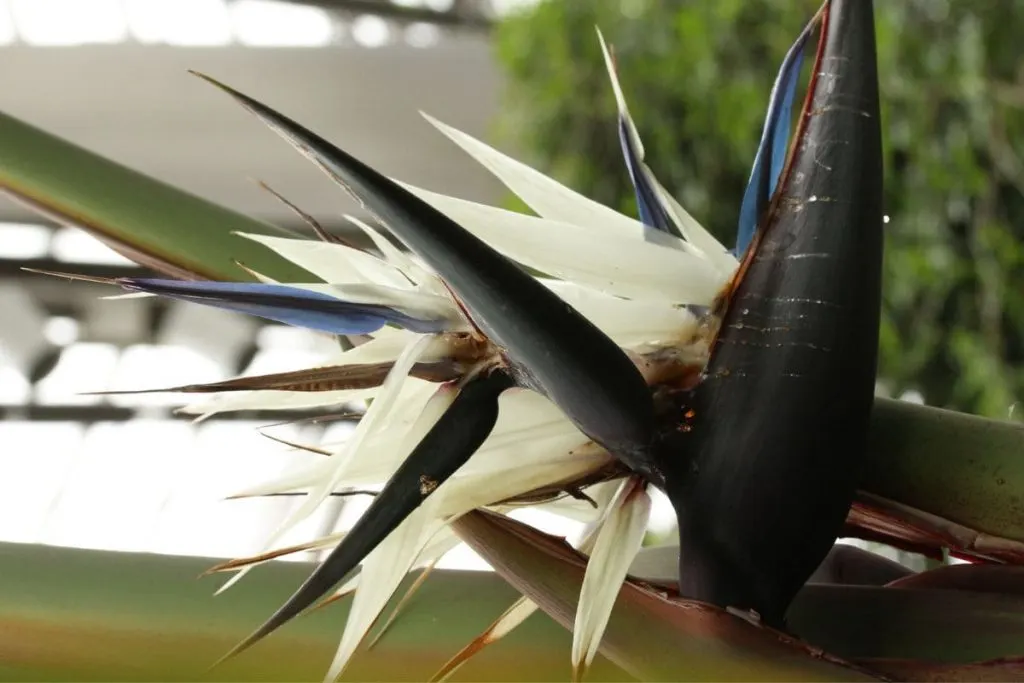
I’m sure you’re asking yourself so many questions right now. Is high humidity good for this plant?
Can I use tap water? Should I make a drainage hole? Should I add a pebble tray? Is distilled water good for this plant? Before you burn out, let us help you.
With our proper care guide, you’ll learn how to take care of these flowers. Once we’re done, you’ll no longer be a green thumb amateur.
You’ll be able to put it in a center of the room proudly to display it. Let’s see how to take proper care of the main star plant in your room.
Is White Bird Of Paradise A Good Indoor Plant?
White bird of paradise is a good indoor plant. Most people think that tropical plants don’t grow in such good conditions indoors.
There is some truth in that, but only if you don’t pay attention to its care guide. If you follow its care instructions correctly, any plant will thrive nicely in your home.
Where Do You Plant A White Bird Of Paradise?
Partial shade and partial sun work well in the afternoon hours. When grown indoors, place them on a southeast window.
Light Conditions

If you find a good location for tropical plants, consider your work. Light is the most important thing for tropical plants.
After light comes to water, but more on that later. It is quite logical that plants in rainforests and their native habitats have a lot of light.
Their vibrant green color is precisely due to the light. With a lot of light and sun, plants regularly carry out photosynthesis, which gives them that perfect green color.
The best light conditions for the paradise plant are direct sun and mild light or partial shade.
In the rainforests, when the sun rises in the morning, it warms and illuminates the plants for at least 4.5 hours.
Practice it at home too. 4 to 5 hours of the direct morning sun. Let there be plenty of light in the afternoon.
Never place this plant in the shade. The plant will not grow in shady corners. It will have difficulties in development, it will be reflected in the appearance of plants, etc.
Watering Needs
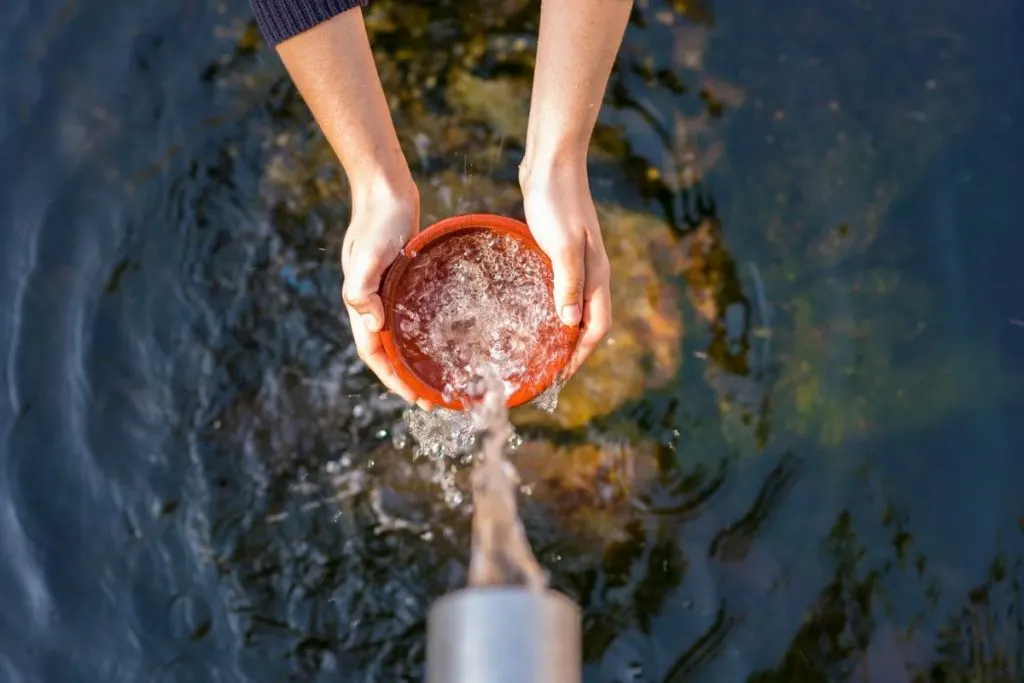
As we have already mentioned, water is the second most important item for these plants. Once you’ve solved the lighting problem, make sure the plant has enough water.
However, remember that in tropical regions, the plant doesn’t really have as much water as it has humidity.
People often know how to kill these plants with too much water at the very start. I had friends who watered these plants every 4 days because they thought they should.
This is one of the reasons why you should always ask experts or someone who knows at least a little better than you. He who asks does not wander, right? Water the birds of paradise plant once every 7 days.
During flowering, you can water every 6 days. It may not seem like a big difference, but 24 hours makes a big difference. The type of water is not so important, tap water or distilled water, the choice is yours.
Soil Type
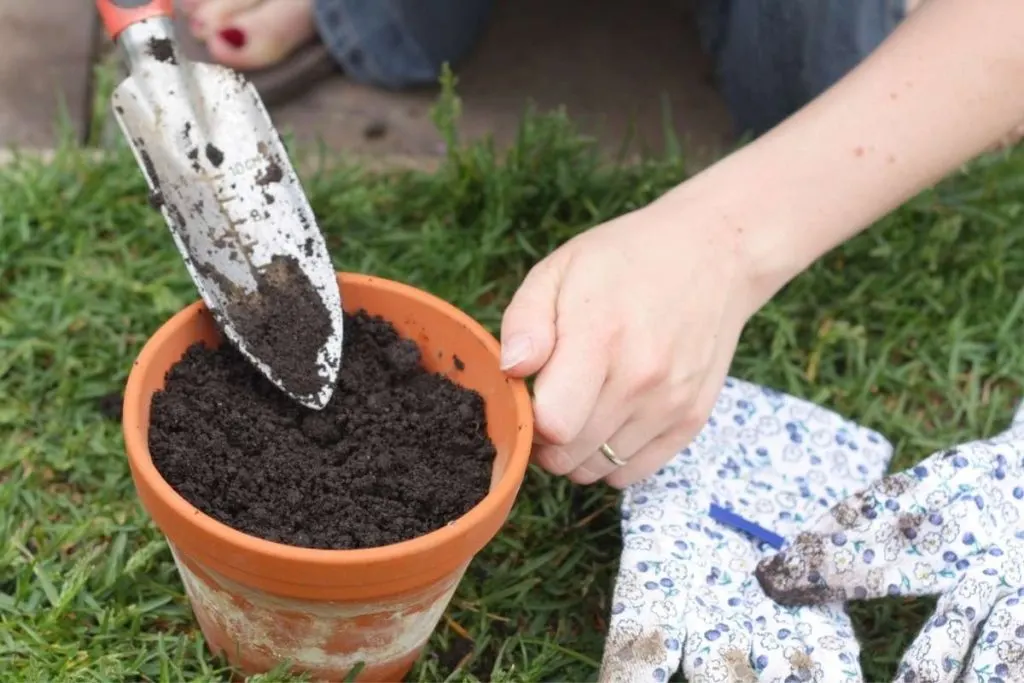
The best soil combination for this plant is coco fiber and peat moss. This dream combination will give your plant all the nutrients it needs.
People sometimes add perlite soil to this mix as well. That way you will get an even “lighter” mix for this plant.
The plant does not like very acidic soils, so plant them in a wide circle. It is precisely coco fiber and perlite that serve as a balance in the combination of these soils. It is important that the soil is well-draining in any case.
It is important to always remember to do a finger check before the next watering. Already wet soil leads to many serious plant problems. Dry soil can be noticed by its appearance, but just in case, put your finger on it.
Temperature Conditions
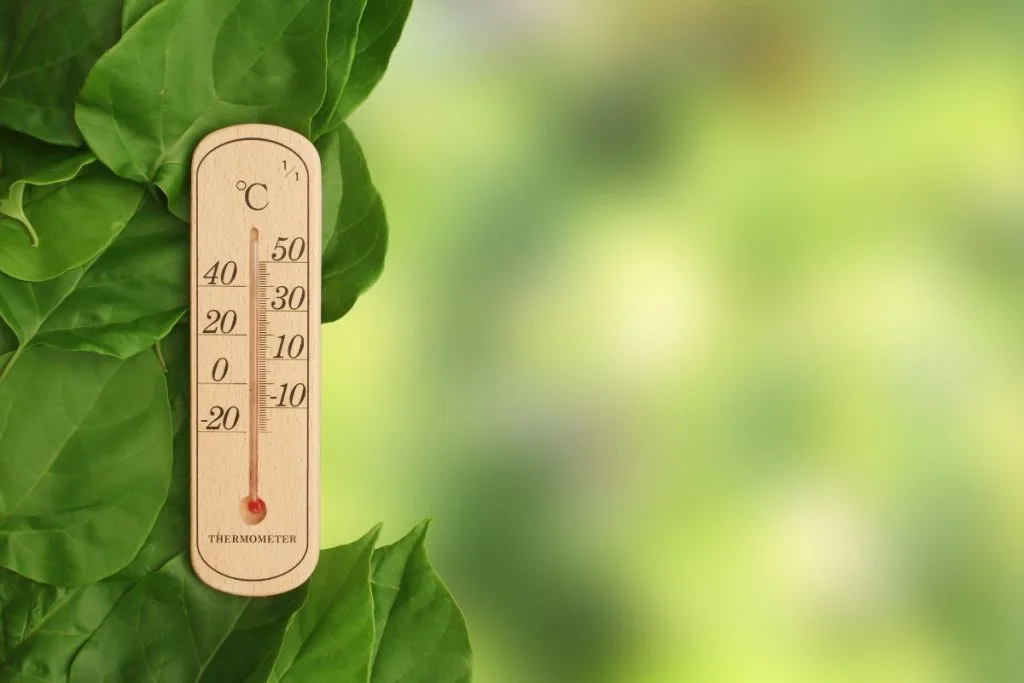
Temperature is also another simple thing when it comes to this plant. As soon as we said that the plant is tropical, you could understand that it likes high temperatures. This plant cannot grow in cold temperatures at all.
If you often turn on the air conditioner in the summer, even such conditions can be fatal for this plant. You will notice its droopy appearance. If you ignore it, you will see further consequences for sure.
The best ratio in which it grows is between 70 and 75 F. In such conditions, the plant grows quickly, and its leaves have a powerful, fresh, and healthy appearance at the time of flowering.
If it grows outside, you surely already know that it has no chance in the fight against frost. Its sensitive leaves will not withstand such conditions.
Another thing you need to pay attention to is the change in temperatures. A sudden change in temperature if you bring it in from the outside can be fatal.
It leads to brown spots, drying of leaves, and yellow tips. If you do not solve all these problems immediately, they will lead your plant to death.
Humidity Conditions
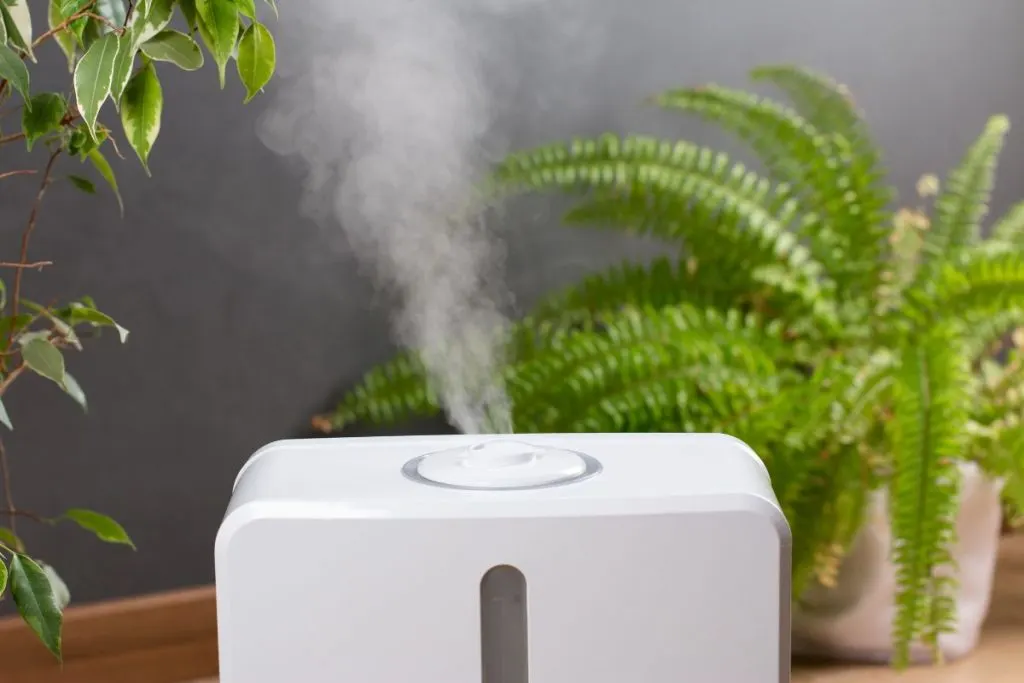
Tropical plants like high humidity. This is not news, you all know that. However, the average home does not have an air humidity higher than 40%.
If you use devices, then they will be increased up to 60%. However, devices such as air conditioners often dry out the air a lot.
This is not only disastrous for the plants, but also for you. Air quality should be an important item that you regularly pay attention to.
It is precisely because of these things that you are advised to add a pebble tray to the container with your plant in order to increase the humidity.
If you are not in favor of that option, buy an air humidifier and increase the general air humidity.
Why not? Better condition for the plant, better condition for you. Two in one, a win-win situation.
Fertilizer
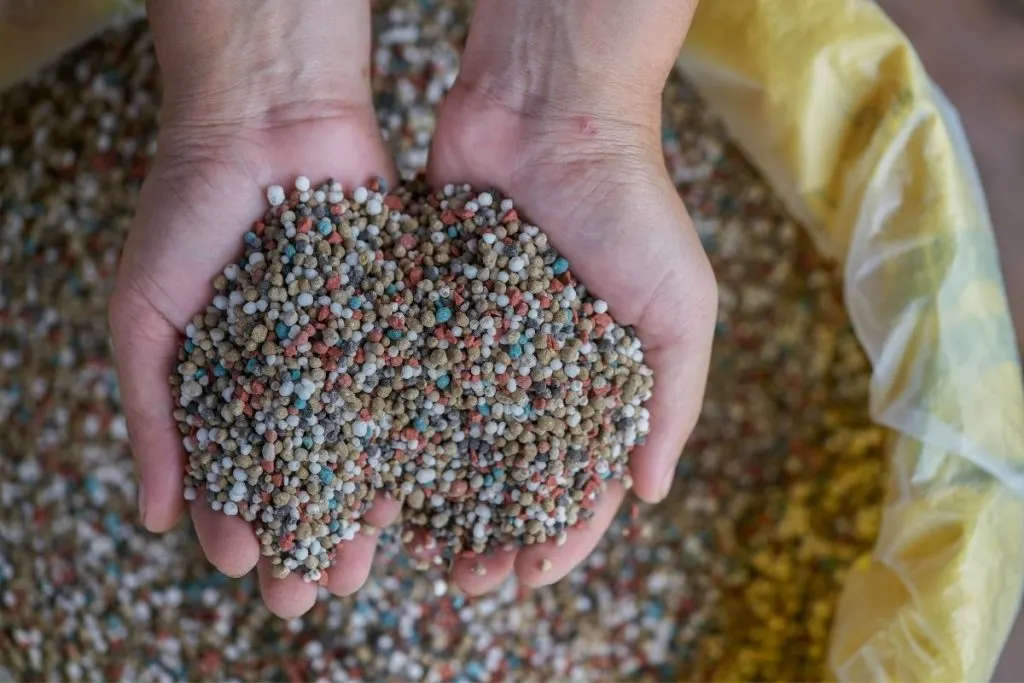
Fertilizers containing nitrogen, phosphorus, and potassium work best for this plant. Always check the composition of the fertilizer when buying, or simply ask about this type right away. This way, you’ll have a perfect balanced fertilizer for your white bird of paradise plant.
Pruning
To prune this plant, use loppers or garden shears. In this way, you will reduce the damage when cutting at the very start.
Some people break branches, which even in madness you should not do! It is very easy to get or find scissors or a knife in the house and trim your plant properly. It is always good to cut plants at a 45-degree angle.
Propagation
To propagate this plant, cut a portion of the plant’s root. This is the easiest way to propagate this plant.
A single stem with leaves will not be able to produce a new plant. But with part of the roots, it will really give new rats in 4 weeks.
You can plant the plant in water or soil, it’s your personal choice. They will have more chances on the ground, certainly.
Pest Control
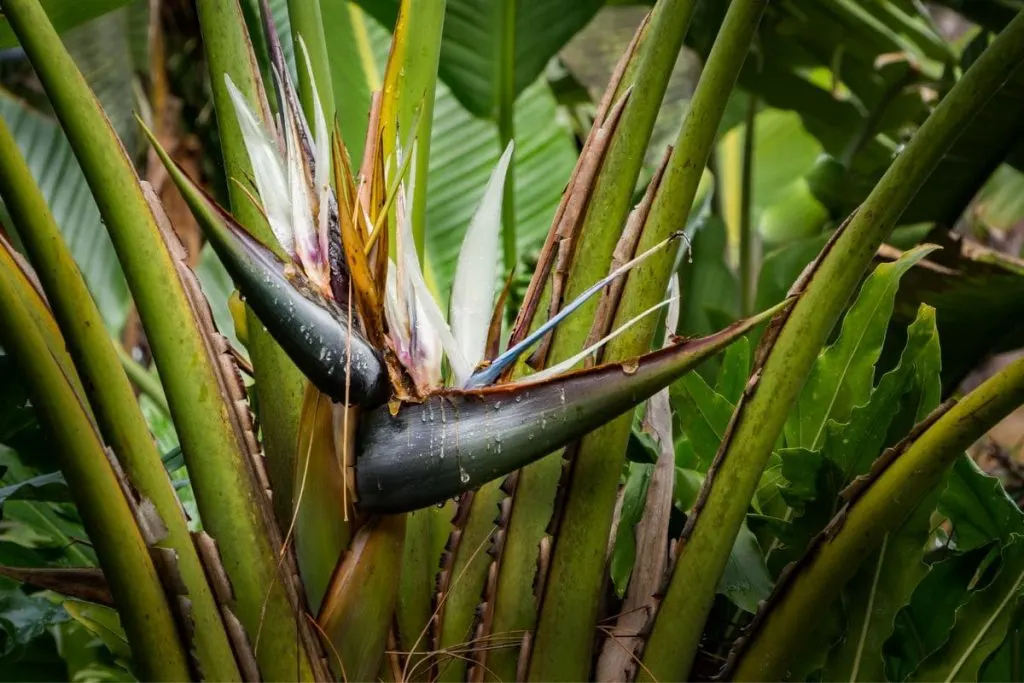
The most common pests on the white bird of paradise plant are spider mites, scale, and mealy bugs. These boring creatures could destroy your plant if you give them a chance.
If you don’t act right away, they’ll lead your plant to death. Let’s see how you can prevent them from spreading.
Spider Mites
Spider mites usually appear during the flowering time of a plant. So, how to get rid of spider mites during flowering? Spider mites love slightly alkaline soils.
They will most likely attack plants with such soils. The white bird of paradise is one of those plants.
They usually appear in the soil and on its ragged leaves. Sometimes, but very rarely, leaves might turn yellow.
Mostly they start getting small brown spots. If you want to avoid this problem, try using dish soap or neem oil. That will help your plant recover and of course, it will kill the spider mites.
Scale
Imagine 8,000 species of small insects that suck the sap of your plant. Those are exactly the scales on your plant. They go for everything! They attack branches, stems, leaves… how do they look like?
They look like a big layer of dust on your plant. You might also spot brown dots that have a solid structure.
To get rid of them, use a soft toothbrush or cotton swab dipped in isopropyl alcohol or a horticultural oil spray.
Getting new leaves after the scaling attack might be a hard challenge for your plant. But plants will eventually recover and continue their growth.
Mealybugs
Mealybugs do the same thing as scales. They suck the sap of the plants. They feed on the leaves and stems of plants.
The damage you will notice on your plants is usually the yellowing of the leaves and eventually the death of the plants.
Mix rubbing alcohol with soap to get a mixture to get rid of these pests. It is best to use a spray bottle to spray the plant with this mixture.
Diseases Of White Bird Of Paradise
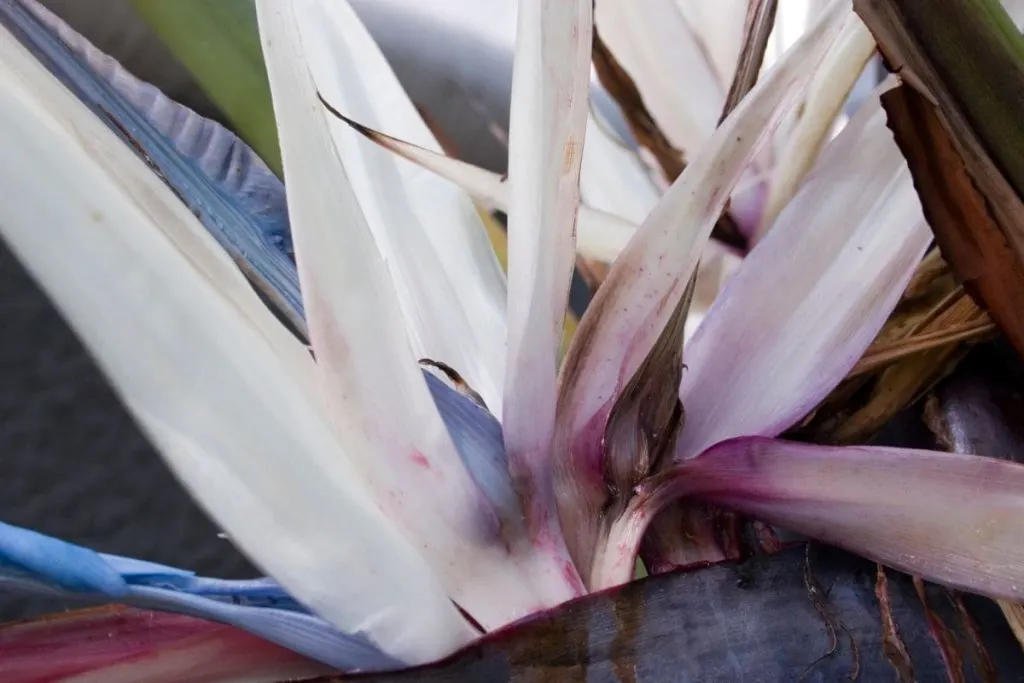
Even beautiful plants get sick. This can be due to your lack of attention, the conditions in which the plant grows, or something else that you cannot control. However, in order to see what causes these diseases, let’s learn a little more about them.
Root Ball
The most common cause of root ball disease is improper transplanting. When a plant is placed in a nursery, it has a specific time during which it can stay there.
If you leave it in the seedling for too long, the roots circulate around the bottom of the container and have nowhere to go.
This causes girdling roots, i.e. the weakening of the roots because there is nothing to hold on to.
Look at it as the curling of the roots at the bottom of the pot because there is nowhere to go. Always ask how long the plant should be left in its nursery to avoid this mistake. For this plant, it is a period of one month.
Yellowing Leaves
Yellow leaves are sometimes caused by pests, and sometimes by too much water or temperature changes. If there are no pests on the plant, then find out which of these two reasons is the culprit.
Too much water circulating in your plant’s container causes yellow tips. The plant has no space or capacity to absorb the water you have given it.
In such situations, the leaves turn yellow because the plant receives more water than it should. Another consequence is often root rot.
Temperature changes are also one of the reasons for the yellowing of leaves. If you brought the plant inside from outside at the turn of the seasons…Yes, you will notice the yellow tips. Prune them immediately to prevent them from spreading.
There is another problem, a common one with this plant. Bird of paradise leaves curling usually happens after sudden temperature changes or lack of water. Learn how to avoid this problem as well for a flawless paradise plant appearance.
Wildlife Of A White Bird Of Paradise
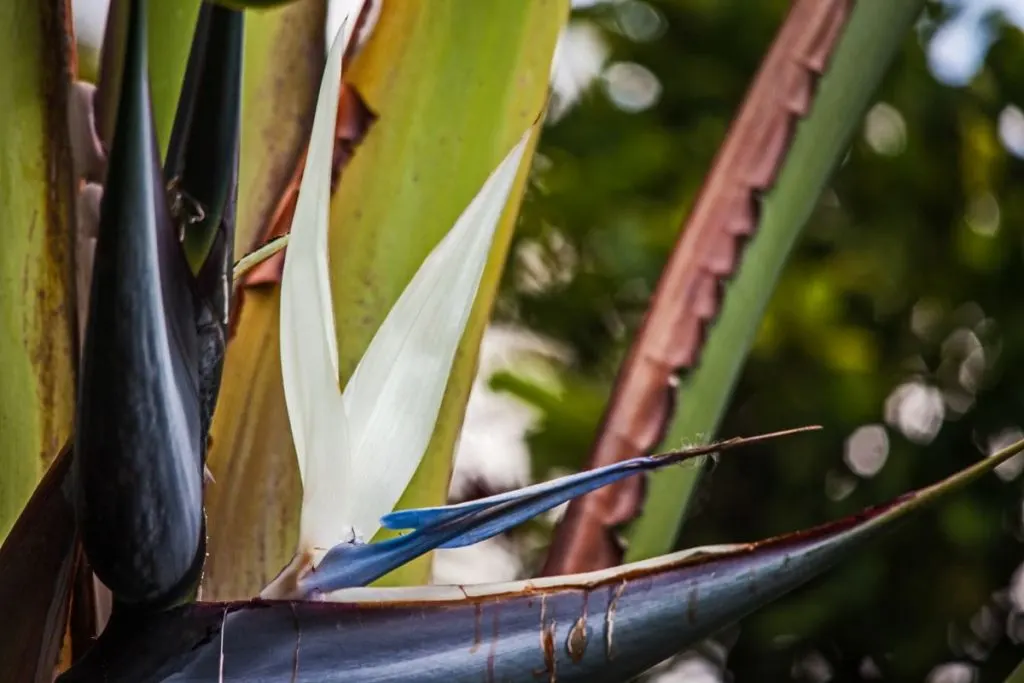
White bird of paradise attracts sunbirds and mousebirds to a garden. However, you will be growing this plant indoors, so you don’t have to worry about this.
Inside, from time to time, it will attract a bee, an insect, or a butterfly if you leave the window open.
But those are just pollinators and you don’t have to worry. When you’re growing them indoors, these little workers will come in handy in flowering season for sure.
They harvest the nectar of these plants. Besides that, isn’t it lovely seeing wildlife in your living room, at least for a couple of minutes?
Symbolism And History Of A White Bird Of Paradise Plant
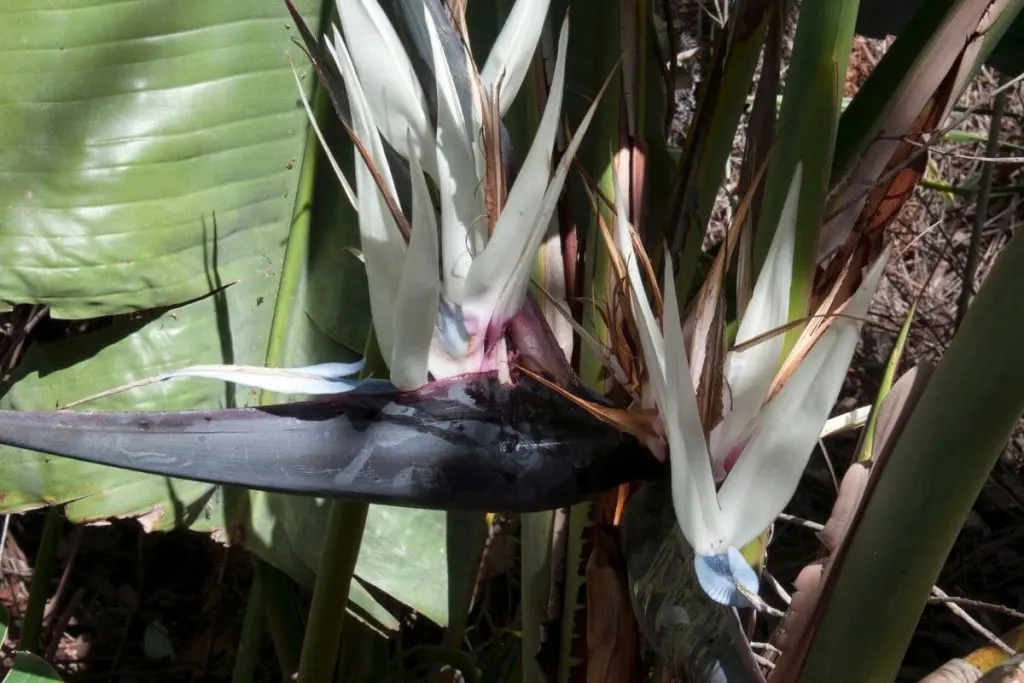
This beautiful plant is given as a gift for the 9th wedding anniversary. It is also a good gift for renewing friendships because it represents and symbolizes long-term love, thoughtfulness, and faithfulness. In Hawaii, this plant is one of the most famous and valued plants. You’ll see her everywhere in Hawaii. In Hawaii, this plant means magnificence.
This plant dates back to the 16th century. It was found in Europe and then brought to other continents. This family has as many as 44 species. Today, it is most widely distributed in New Guinea, then in Europe, and then in Australia.
White bird of paradise is the most sold flower, after roses, in the world because of its durability of the flower. A bird of paradise flower in a vase can stay fresh for over 20 days. This plant is increasingly grown as a houseplant. The flowers are very durable and open fan-shaped. They usually grow up to 3 feet tall.
King George III of England, after he built a botanical garden for his wife, imported this plant to England. Queen Charlotte completely fell in love with this flower. Even today, in a botanical garden Kew, you could spot white birds of paradise plants. In addition to this symbolism, this flower is also a symbol of the city of Los Angeles.
Wrapping Up
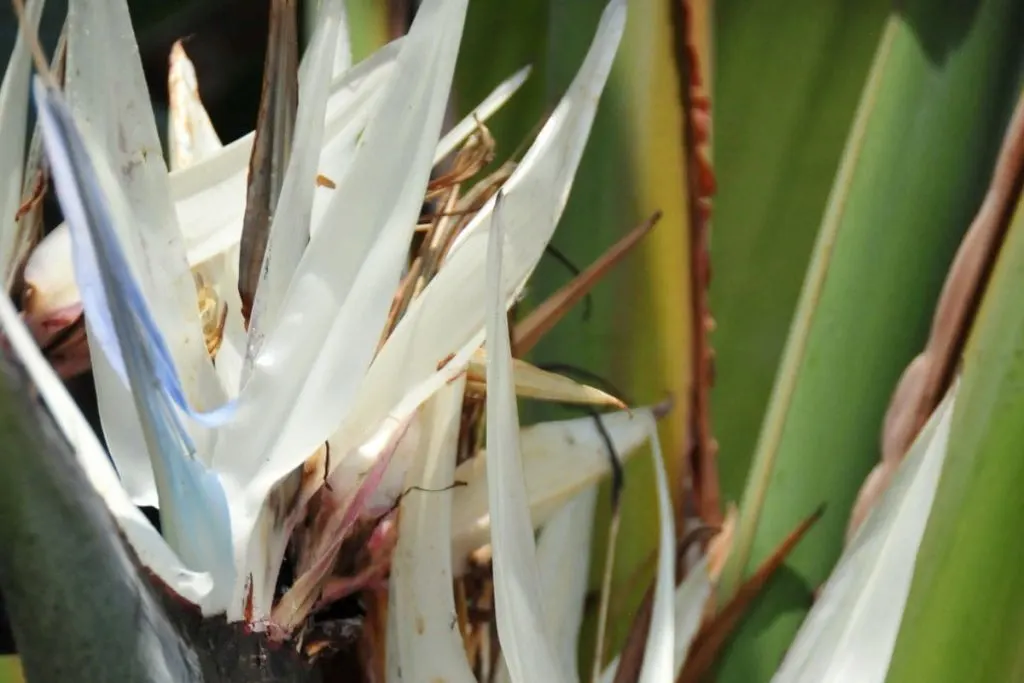
I know that you are now very interested in the white bird of paradise plant. Well, how could you not be?! Perfect white-blue leaves, large leaves, and a tropical appearance that will not leave you indifferent!
With all that, even this look doesn’t require that much attention. At least not as much as you might have thought earlier. If you had any doubts up to now, I’m sure we’ve cleared each and every single one for you.
This beautiful plant requires a little love, a lot of light, and some water here and there. This might even be the formula for the perfect success of this plant.
That would be all for today. See you soon with similar topics.

